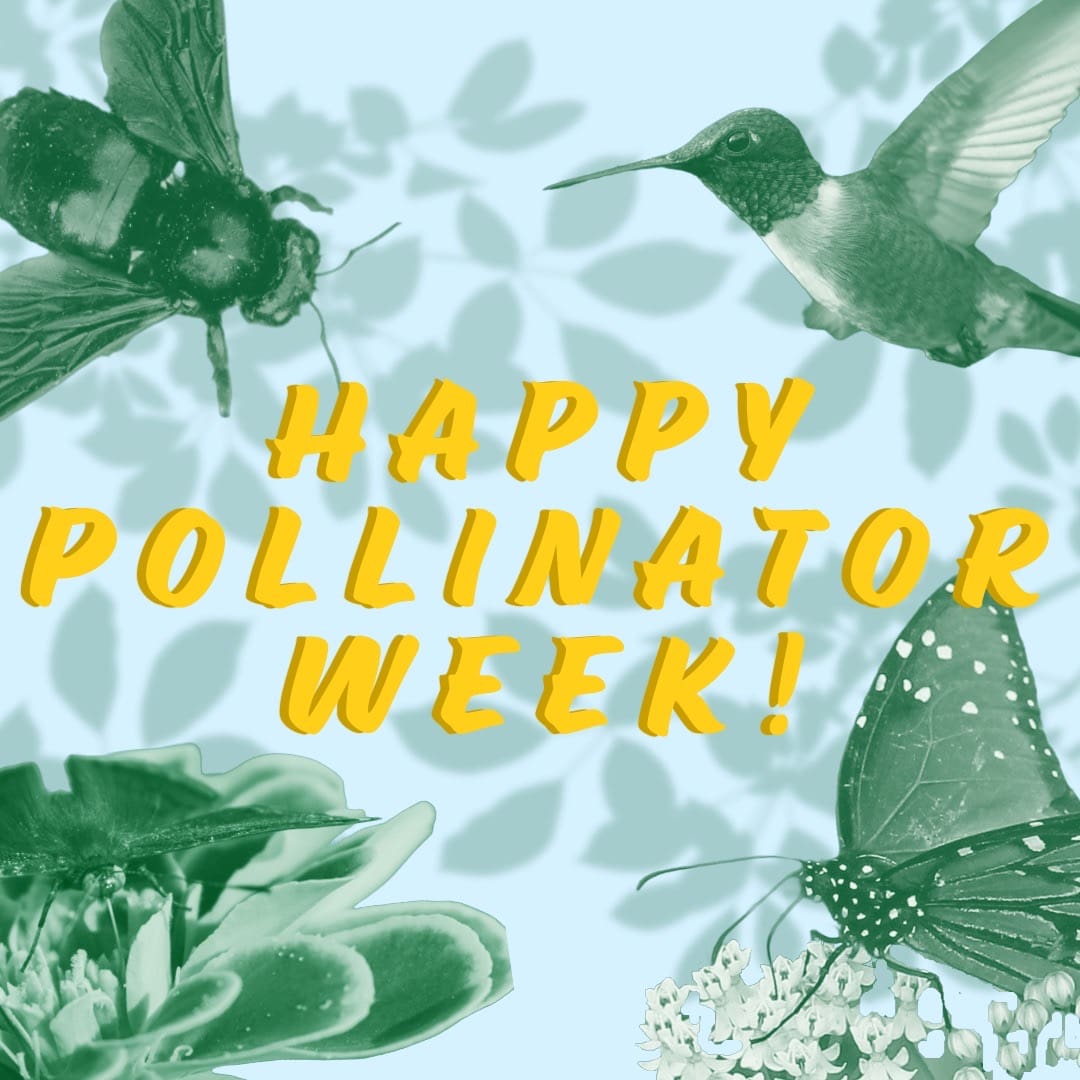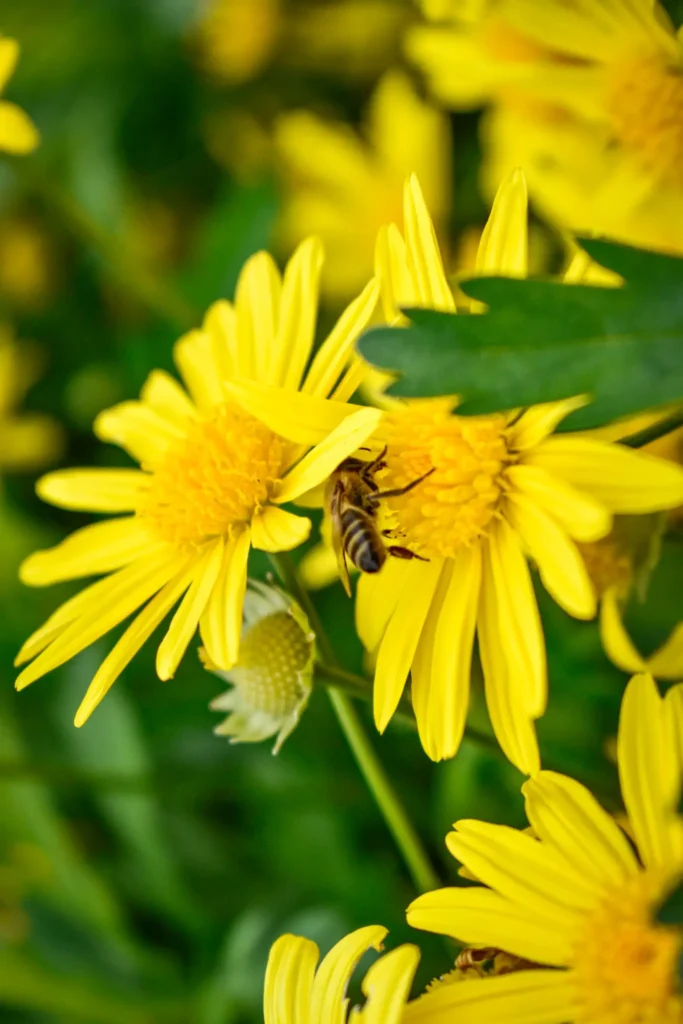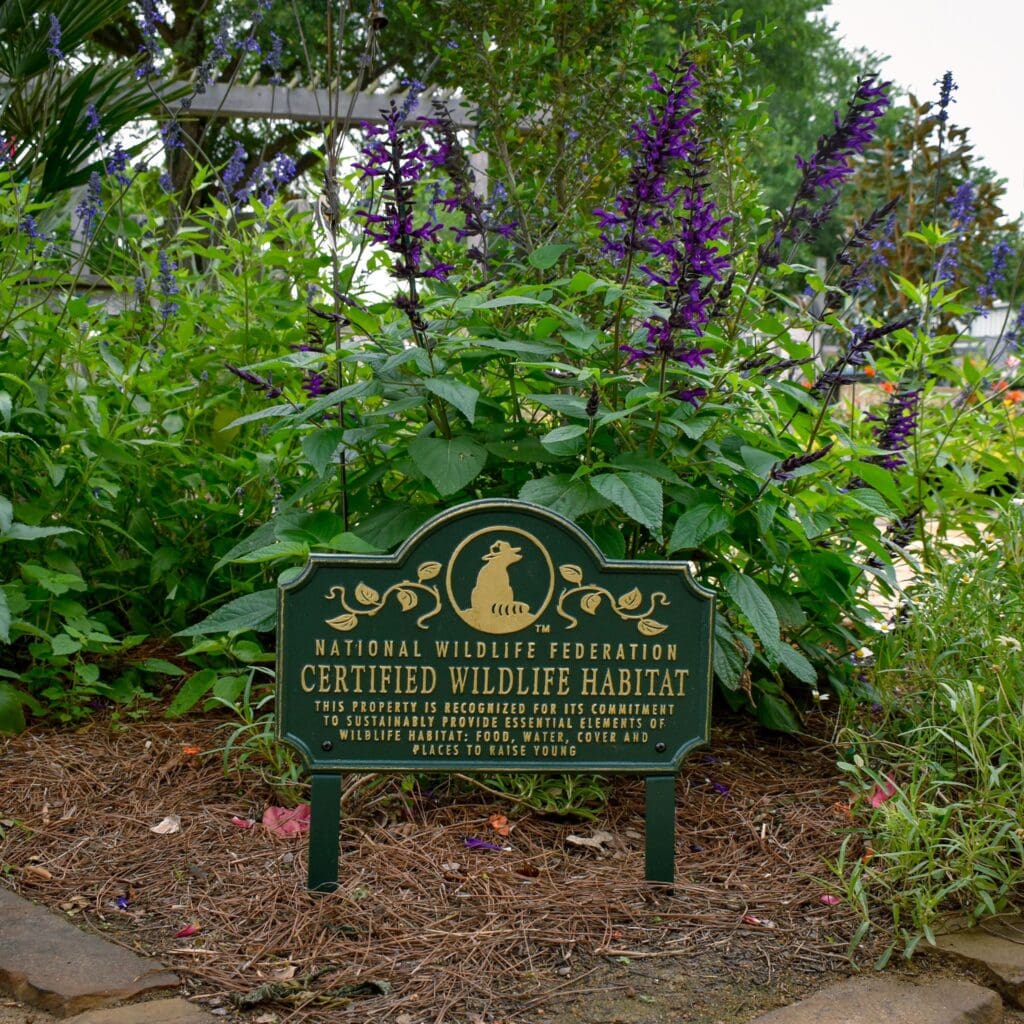It’s International Pollinator Week, y’all! Now’s a great time to add elements to your landscape to support our essential pollinator friends like birds, bees, and butterflies. Did you know at least 75% of all flowering plants on earth are pollinated by insects and animals? When you support pollinators in your backyard by providing food sources, water, shade/shelter, and places to raise their young, you support our local ecosystem and the whole planet. Here are a few tips to get your garden buzzing with life.
Plant Summer-Tough, Pollinator-Approved Plants!
When you visit Gill’s right now, you’ll see that we’ve shifted our selection to plants that thrive in the summer. And so many of those are great options for attracting pollinators. Think blooming perennials like native Turk’s Cap, Salvias, Thryallis, different Esperanza varieties, Texas Sage, and Lantanas. Think drought-tolerant blooming trees like Desert Willow, Wild Olive, and Vitex. Think about replacing an area of lawn with blooming Frog Fruit as a groundcover! Think annuals like Zinnias and Basil! All of these and many more can be planted now and love summer temps. Birds, bees, hummingbirds, and butterflies will feast on their nectar and fruit! Speaking of butterflies, we also have a nice crop of native milkweed (Asclepias tuberosa) which LOVES our summer climate and requires very little water.
Pro tip: If you want pollinators to find your yard quicker and easier, plant a lot of the same variety of plant in 1 area together rather than 1 or 2 spread out.
Provide Fresh Water Sources
The rains this week have been wonderful for pollinators! They’re all looking for sources of fresh water and places to rest and have a drink. Bird feeders are great, but you may have noticed that more birds flock to a bird bath. Bees and butterflies love bird baths too, but they can drown if the water is too deep. Place a few rocks in your bird baths to make sure butterflies and bees can find shallow spots and easily climb out. Or get a few shallow Bee Puddles (pictured above). If you’re worried about attracting mosquitos with your water sources, you can use organic Mosquito Dunks or Mosquito Bits. They dissolve in your bird baths, rain barrels, fountains, etc. and they are harmless to animals, humans, and other insects. They only target mosquitos!
Provide Shelter
You may be thinking bird houses or shade structures, which are great too, but plants are excellent for providing shelter for pollinators. Think about plants that birds and insects can hide out in. Our favorites…grasses! Native coastal Muhly grass, Cassian grass, Crystal Ruby grass, purple fountain grass – the list goes on. They provide beautiful blooms and movement in your landscape, and they’re dense foliage make them great shelter plants.
Certify Your Yard!
Just by providing these simple elements, your yard is eligible to become a Certified Wildlife Habitat with the National Wildlife Federation. By filling out a simple questionnaire and making a small donation, they’ll send you a certificate and a sign that you can proudly display in your landscape. We have one here at Gill’s! You can also register your pollinator habitat, however big or small, with Homegrown National Park and get on their Biodiversity Map. If you zoom in to our area on the map, you’ll see several of your neighbors in Corpus, Rockport, Port Aransas and surrounding areas who have registered their gardens!







Angelica McCullough says
Your content consistently impresses me.
Crystal Rowe says
Your blog brightens my day.
Breana Parker says
I enjoy reading your articles regularly.